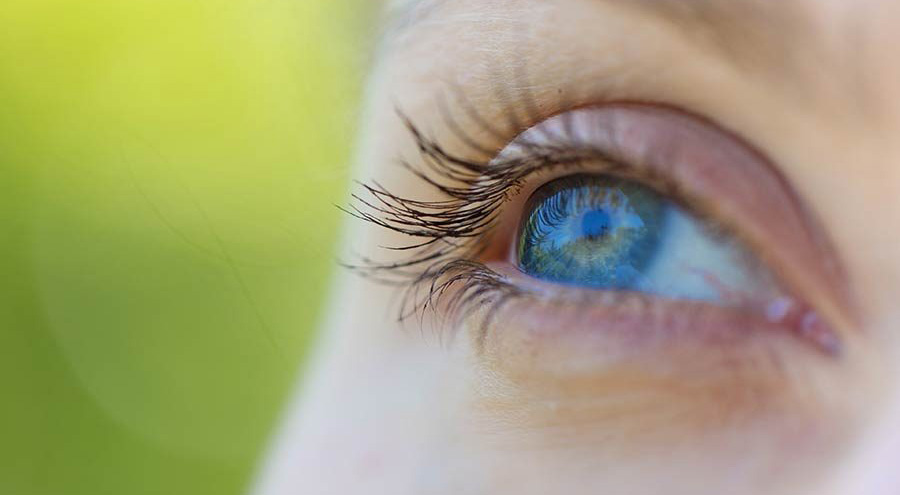Causes of Glaucoma
There are two main subtypes of glaucoma – primary glaucoma, when there is no identifiable cause, and secondary glaucoma, where there is a known predisposing factor such as injury, or inflammation.

There are several theories about the causes of primary glaucoma, and although we don’t know all the answers yet, we have identified several key risk factors:
- Elevated eye pressure (this is not the same as elevated blood pressure)
- Large optic nerve or thinning of the optic nerve
- Closed drainage angle of the eye
- Thinner than average cornea
- Family history (especially siblings)
- Race (open angle glaucoma – African derived and Hispanic derived race; angle closure glaucoma – Asian derived race)
Recommendations for Identifying Glaucoma
Eye pressure can be checked at any eye doctor’s office. Knowing what’s “normal” eye pressure is not so straightforward though. The average eye pressure is 16 mm Hg, but we know that some people with an average pressure can develop glaucoma, whereas others won’t. This is where the other risk factors really come into play.
- Get a complete eye exam — which means getting your eyes dilated. Through a dilated exam, we can actually see the optic nerve and assess the size as well as any areas of potential thinning. Some people are born with large optic nerves and will never get glaucoma; but we cannot determine who will and who won’t develop glaucoma over time, hence the importance of a yearly eye exam for those with a large nerve. Family history and race are strong risk factors; if you have a close family member with glaucoma, you should get a screening exam. People of African, Hispanic, and East Asian descent are also predisposed to glaucoma (open versus closed angle) and should get a screening exam.
- Before the eyes are dilated, I also recommend getting a check of the drainage angle. The cornea thickness can also be measured with a small hand-held device. People with a thinner than average cornea are at greater risk for glaucoma and should be monitored.
Glaucoma treatment is one of the fastest growing areas in ophthalmology research and development and the disease management options are improving as time goes on. Our goal is to halt or prevent any further deterioration of optic nerve damage.
What Causes Secondary Glaucoma?
There are two main subtypes of glaucoma – primary glaucoma, when there is no identifiable cause, and secondary glaucoma, where the cause is a secondary factor such as trauma, another illness, or medications. It is important to be vigilant about your overall health and be aware of things that can increase your chances of developing glaucoma.
The basic cause of glaucoma is a blockage to the drainage system of the eye; something is getting in the way of the eye’s natural drain, and as a result, pressure builds up. This pressure exerts a damaging effect to the optic nerve and causes the nerve tissue to degenerate. This leads to irreversible vision loss such as blurred or blind spots in the vision, glare, and the inability to see in dimly lit conditions.
Trauma to the eye can occur as a result of injury such as an accident that causes the eye or surrounding structures to be hurt, or as a result of another eye surgery or laser treatment that you’ve had. Injuries can stretch and cause scarring to the eye’s drainage system. Sometimes blood or even a foreign body can land in the drainage system and lead to the drain slowing down to the point where the amount of fluid being formed in the eye is too much for it to handle. People who have had an eye injury should get a test called “gonioscopy” to check the drainage angle.
There are certain diseases that affect your entire body and can lead to secondary ramifications to the eye. Autoimmune conditions lead to inflammation in the body and may also involve the eye. The inflammation clogs the drainage apparatus, and the pressure builds up. Steroid medications are a common treatment for autoimmune or inflammatory conditions, and when used for more than a few weeks, they can also cause dysfunction of the eye’s drain. Light sensitivity can occur with inflammation in the eye, but usually there aren’t any major symptoms. Therefore, it is important to get a yearly eye exam, especially if you have a chronic illness.
Diabetes, high blood pressure, and other cardiovascular diseases do not cause glaucoma directly, but if any of these conditions is uncontrolled, abnormal blood vessels can actually grow into the eye and close the drainage system off. The eye pressure can be extremely high in these situations and can lead to loss of vision if not treated quickly. Symptoms to look out for are reduced vision, red eye, eye pain, and headache. We recommend that if you have one of the above-mentioned conditions, you should get a dilated eye exam every year.
The best way to reduce or prevent damage to the eye is simple, get your eyes checked every year! Don’t wait for symptoms to show up. Remember, once glaucoma starts, the damage that it causes cannot be reversed.
